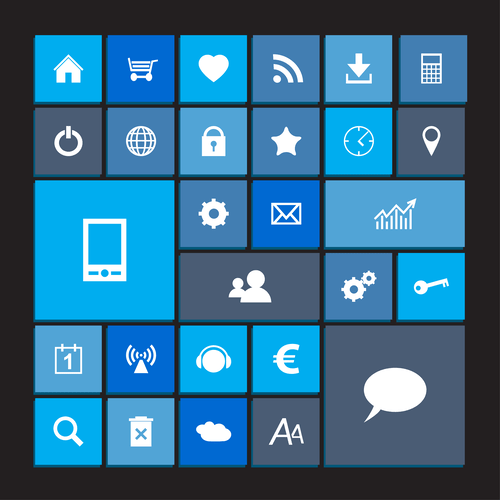Automate software deployment, gain control over complex release cycles, speed the release process and improve product quality with IBM UrbanCode®. Good leadership fosters a good culture that promotes change within the organization. It is important and essential in DevSecOps to communicate the responsibilities of security of processes and product ownership. Only then can developers and engineers become process owners and take responsibility for their work.


Not many people will welcome a drastic change to something they’ve been doing the traditional way. And the fact that security was considered more of an afterthought in the predecessor software development models doesn’t help. Operation is another crucial step, and periodic maintenance is a regular function of operations teams.
DevSecOps
Container image risk management—identifies secrets embedded in images , software vulnerabilities, malware, and configuration defects. DevOps practices work to share responsibilities more evenly and reduce finger-pointing and toxicity. The principle of least privilege is a key concern of the release phase. PoLP means that any user, program, or process, has minimum access to perform its function. This involves auditing API keys and access tokens so that the owners have limited access. Without this audit, an attacker may find a key that has access to unintended areas of the system.


It’s referred to as “shift left” where cybersecurity is implemented automatically during the testing instead of scanning in production. Automation is necessary to integrate security in this environment, as is embedding the essential security controls and tests across the development lifecycle. It’s also important to add automated security testing to CI/CD pipelines to enable real-time vulnerability scanning. Checkmarx offers a static application security testing tool that scans for security vulnerabilities in code.
Tip #1: Understand Your DevSecOps Goals
Moving to the cloud often means bringing on new development processes, tools, and systems. It’s a perfect time to make processes faster and more secure — and DevSecOps could make that a lot easier. This article introduces DevSecOps, making security part of the entire software development process.
Developers are looking for guidance and standard practices as they take on more security testing responsibilities. If you do it retrospectively, you probably forget what you had in your mind when you were writing that piece of code, and you would struggle to cover all possible scenarios. Traditionally, potential security issues could lead to huge delays. Right before it’s going to be deployed, a security team, or an auditing team, sometimes even externally hired only for a short period of time, would step in, do some review, and generate some reports and improvement plans. Two weeks before the release, an external QA team jumped in as well, starting to do more security-related tests. It was two crazy weeks because there was a lot of fixing and re-testing, of course.
The DevSecOp tools that secure DevOps workflows
When security tools plug directly into developers’ existing Git workflow, every commit and merge automatically triggers a security test or review. These tools support different programming languages and integrated development environments. Some of the more popular security code tools include Gerrit, Phabricator, SpotBugs, PMD, CheckStyle, and Find Security Bugs. DevSecOps tools for the code phase help developers write more secure code. Important code-phase security practices include static code analysis, code reviews, and pre-commit hooks. Introduce security throughout the software development lifecycle in order to minimize vulnerabilities in software code.
Although the term DevSecOps looks like DevOps with the Sec inserted in the middle, it’s more than the sum of its parts. DevSecOps is an evolution of DevOps that weaves application security practices into every stage of software development right through deployment with the use of tools and methods to protect and monitor live applications. New attack surfaces such as containers and orchestrators must be monitored and protected alongside the application itself. DevSecOps tools automate security workflows to create an adaptable process for your development and security teams, improving collaboration and breaking down silos. By embedding security into the software development lifecycle, you can consistently secure fast-moving and iterative processes, improving efficiency without sacrificing quality.
Shift Left
DevSecOps integrates an organization’s security team into the traditional DevOps organization. While DevOps integrates software development and production teams to produce bug-free applications, DevSecOps takes the added step of ensuring those applications are secure. The goal of DevSecOps is to embed security checks into every aspect of software development and production, adding another layer of prevention against data breaches and cyberattacks.


Unfortunately, accurately detecting vulnerabilities in open source software is not something traditional security tools were designed to do. Traceabilityallows you to track configuration items across the development cycle to where requirements are implemented in the code. This can play a crucial part in your organization’s control framework as it helps achieve compliance, reduce bugs, ensure secure code in application development, and help code maintainability.
Security
Automation of security controls and compliance channels to ensure DevOps at speed. As soon as the competition started to flare up, enterprises demanded market-ready solutions in weeks and even days to be at an advantage. While DevOps solved the dilemma and proved to be a significant disruptor, transforming development cycles as more https://www.globalcloudteam.com/services/devsecops/ rapid, flexible, and frequent, outdated security practices kept sabotaging even the most efficient efforts. In our recent CISO survey, 77% of respondents said most security alerts and vulnerabilities they receive from their current security tools are false positives that don’t require action, because they’re not actual exposures.
- It integrates security into all aspects of the development and software delivery processes and across teams.
- By delivering code in small chunks, you’ll be able to detect vulnerabilities more quickly.
- Once an application is deployed and stabilized in a live production environment, additional security measures are required.
- For example, many potential students are looking for a course they can take with a full-time job as they transition into the DevSecOps field.
- Developers regularly install and build upon third-party code dependencies, which may be from an unknown or untrusted source.
Acunetix is a web security scanner intended to help developers find vulnerabilities as early in the development cycle as possible. Acunetix enables organizations to protect their web assets from hackers by providing specialized technologies that developers can use to detect and fix issues. The essence of DevSecOps is integrating teams so they can work together rather than independently. However, not everybody is ready to make the switch because they’re already accustomed to current development processes. In the production environment, various monitoring applications and security software monitor the application.
Best Practices for a DoD DevSecOps Culture
But with multiple options available, how can you choose the right DevSecOps course for you? This article will go over essential https://www.globalcloudteam.com/ tips for selecting the best DevSecOps certification. Alerting tools—help DevSecOps teams respond quickly to security incidents.


